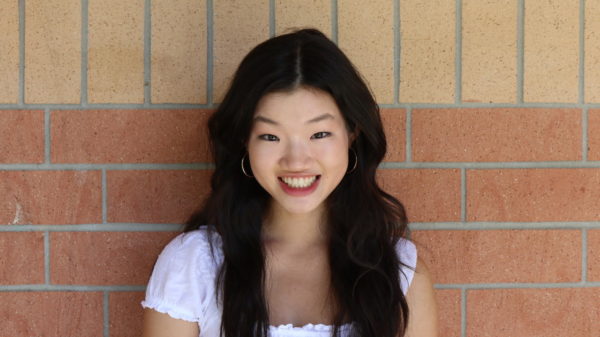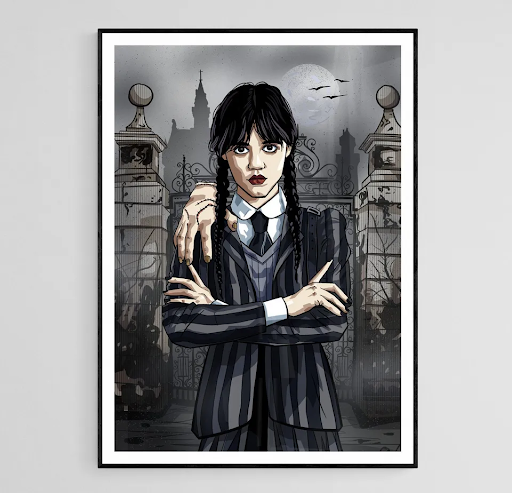Modern teen movies- take note of Do Revenge’s modern nostalgia
photo illustration by Sarah Yee/ Sony Pictures Entertainment/Columbia Pictures/ the CW/ Buena Vista Pictures, Touchstone Pictures/ Netflix/ Red Canoe Productions/ RockFish Productions/ New World Pictures /Cinemarque Entertainment/Paramount Pictures
“Do Revenge,” released Sept. 16 on Netflix, is a teen movie noted for its blend of beloved teen tropes from the 90s with modern actors.
Netflix’s latest teen movie “Do Revenge” is a scheming satire that plays homage to 90s teen icon movies.
As star Camila Mendes herself proclaims the movie is “Clueless” meets “Cruel Intentions.”
It’s tropey to twist but positions itself in the delicate balance between memable and iconic, just the right amount of cringy to get away with what most other teen movies of the Gen Z era cannot. Unlike most of Netflix’s adolescent fodder, “Do Revenge” has received both warm critic and audience reception, with a respectable 84 percent from critics.
“Do Revenge” is also R rated for language: the brunt of the R rating relished in the c***ts of Sophie Turner in all of her red haired, tennis girl chic cursing cameos.
“Do Revenge,” is a tale of two revenge “mommies,”-a nickname Queen bee, Drea Torres affectionately dubs herself and new transfer student Eleanor Levatan at Rosehill High School.
Both girls couldn’t be more different, Torres,the self assured and decidedly narcissistic scholarship student and Eleanor, the awkward and self deprecating type. After Torres’ sex tape is leaked, she seeks revenge on the perpetrator-her ex boyfriend Max Broussard, the ultimate in Torres’ words, “manic pixie dream boy,” and “patriarchy incarnate.”
Armed with the inconspicuous eyes of each other, the two team up to “do (each other’s) revenge.” The plan is simple; Eleanor will infiltrate Rosehill’s Highs “it” group and will expose Max for being a “fake-woke, misogynist,” while Drea will expose and expel student chef Carissa for growing cannabis.
Like all “simple” schemes, both the execution of the revenge ploy and “Do Revenge’s” plotline aren’t so simple.
“Do Revenge,” leverages its “teen” talent, featuring Austin Abrams (“Euphoria”), Camila Mendes (“Riverdale”), Maya Hawke (“Stranger Things”) and Jonathan Pope (“Outer Banks”). Even Sarah Michelle Gellar welcomes reprise to the decadent mystique of her cult status role in “Cruel Status.” as the stern, bonsai revering and rearing headmaster at Rosehill (Cruel Intentions).
As a Gen Z teen, one of the biggest criticisms I have of recent teen movies are their cringe-inducing efforts to be relatable-as if to declare that they too understand teenhood because they cuss as many words as are in a sentence and gossip in the bathroom between long drags of illegal substances.
“Do Revenge,” doesn’t try to be realistic or novel-instead recognizing the “teen movie trope” cards it’s been dealt and subverting them in fashionably satiric self-awareness.
There’s the obligatory makeover Drea gives to Eleanor, the prom fight, Ivy League obsession and unhinged, unhealthy dispersion of Gen Z lingo. The revenge ploys are dramatized
“Teenage girls, we’re psychopaths,” proclaims Eleanor as she cradles her lizards, hair stringy and eyes strewn in the black paint that oozes down bathtub tiles.
Yet Do Revenge” excessive background only further illuminates its relatable foreground- the exploration, immersion into the characters’ relationships and mental health.
The best examination of character relationships is the titular, unlikely friendship turned revenge ship of Drea and Eleanor.
In a third act twist, Eleanor commands her villain arc, revealing that she is the girl Drea ostracized as a “pervert” and outed-she is the girl whose life spiraled into deep depression.
As cards and revenge ploys deliciously unravel, Eleanor and Drea’s love-hate relationship simmers, stewing in the unholy trifecta of boys, booze and everything in between.
Yet beneath these wayward shards, they hold the brokenness they need to find each other at the end.
From the start, “Do Revenge,” entices a certain character archetype upon each of its leads and supporting characters: there’s Drea, the typical narcissistic Queen Bee, Eleanor, the awkward outsider, Max, the scheming scumbag of an ex boyfriend used in typical “topple the patriarchy,” fashion and Drea’s circle of friends, most notably Tara, the age old best friend and betrayer in the shadows.
Campy exteriors cast aside, at their core, Drea and Eleanor are painfully human. Drea feels trapped in her cultivated social media presence and dreams of an escape to Yale and a corporate law life where her ambition will be taken seriously-she’s been characterized as a pretty, plastic girl from the start, of her own accord.
Eleanor feels trapped in the character Drea has unknowingly cultivated for her; she longs for an opportunity to feel included, to shed the conniving identity she has written for herself but can’t unwrite, unwire.
“It’s much easier to destroy a girl,” Drea tells Eleanor as she gives her a makeover. “Take your pick. Slut-shame her, turn her friends against her, prey on her vanity, turn her into a troll, exploit her darkest secrets. Make her radioactive and no one will help her.”
What most teen movies don’t understand about crafting a compelling and accurate narrative between female relationships-when the movie closes, it shouldn’t be about the shallow themes generations of teen girls have historically been told to voice as their only choices-the constant competitions, rate race between who is the prettiest, who gets the “guy,” even now, who gets into the best college, has the perceived “brightest future,” because it’s uncool to peak in high school.
Drea and Eleanor are two faced, fueled by competitiveness and jealousy. But their yearning for love is underrecognized and expressions of their negative emotions over recognized- if these emotions weren’t so ingrained, satirized thanks to the movie’s premise, would viewers even understand the message?
There is comfort, chaos in teen female friendships.
Drea and Eleanor are complete opposites in personality and physicality, yet they share a common quest for possession of their identity. In a social media obsessed era, many teens identify with similar, albeit less hyperbolized identity crises. Who are you really behind all the metaphorical and actual screens? Moreover, do you like what, who you see?
Their relationship is a meme-ably memorable. Some have criticized the relationship between Drea and Eleanor as toxic, but that’s the point. They were never fully friends or enemies-in their attempted destruction of the other, they only destroyed themselves.
They fight, make up, make out with their revenge bags and do it all again- and all along this rollercoaster of a ride that should have been catastrophic, the viewer finds connection.
As the film credits roll, the girls cruise down the Miami highway in Eleanor’s Mercedes, singing along to a Meredith Brooks classic.
“I’m a b***h, I’m a lover, I’m a child, I’m a mother, I’m a sinner, I’m a saint, I do not feel ashamed,” the girls chant as they throw their hair back in triumph of their dual “do revenge” acts.
“I’m your hell, I’m your dream, I’m nothing in between, you know you wouldn’t want it any other way.” Cue the credits closing credits.
What I want is a return to self assured coverage of controversial teen conversations-cringe does not equal creativity, account accuracy.
What I want is a reprieve to the fantastical cotton candy world of 90s movies-”Do Revenge,” offers tribute in a soft infusion of pretty pastels on plaid.
As a Gen Z teen, I want this charismatically crazy interpretation, the nostalgia with new and the sadist saccharinity of it all.
It’s true; I like “Do Revenge’s” heavily accessorized 90s teen movie tropes.
I wouldn’t want modern teen movies any other way.

Sarah is a senior and Co-Editor-in-Chief. This is her fourth year on the Gazette staff.









Rebecca • Nov 4, 2022 at 10:52 am
This seems very interesting, I’ll have to check it out!